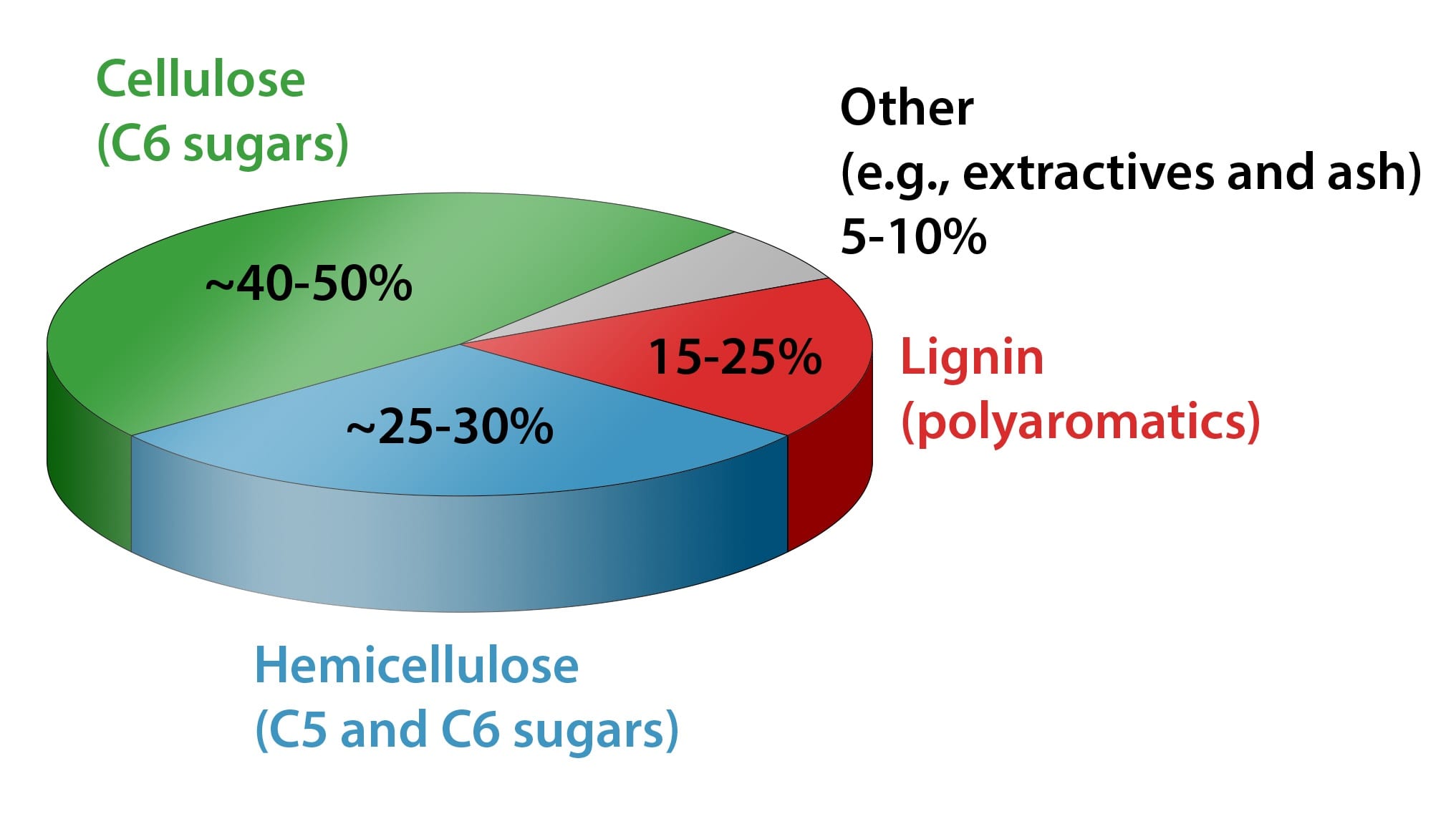A year ago, I was invited to present my research findings at a conference held at the National Renewable Energy Laboratory. So, there I was, standing in a room full of experts from all over the world, waiting for my turn to present my research. However, after listening to everyone else's talks, I was surprised to find that almost everyone in the room was somehow working on the same project as mine, albeit from different perspectives. All these amazing scientists were putting their combined efforts into improving our usage of a widely abundant but underutilized natural resource: lignin.
As someone who currently does research on utilizing lignin, I always get asked “What is lignin? And why does it matter how we use it?â€. I can totally relate to these questions, since I was personally unfamiliar with the potential uses of lignin before going into my current research (don't tell my adviser I said that). Lignin is one component of plant dry matter (or lignocellulosic biomass). While the major component, cellulose, receives lots of attention, lignin has not been fully utilized. This is due to the difference in their structures. Unlike cellulose, which is chemically simple and easy to work with, lignin is chemically complex. In plants, lignin provides defensive properties and rigidity among other roles. Therefore, it is very resistant to degradation.

While the name “lignin†may be unfamiliar to some of us, we have probably interacted with something that contains lignin. For instance, have you ever noticed how old newspapers turn yellow? Well, that yellowing is due to traces of lignin in printed paper. Since producing high quality paper requires removal of lignin, the latter is often discarded as waste in the paper and pulp industry. In other industries, such as biorefineries, lignin is separated from the rest of plant material and burned to provide the heat necessary to run the facility. Sounds like we are using lignin, right? Well, we are, but not efficiently. Even when lignin is burned for heat, a big portion remains and is still discarded as waste. From this perspective, scientists started to think of better and more economic ways of using this underutilized resource.

Encouraged by previous success with cellulose, initial attempts focused on generating renewable energy from lignin. Unfortunately, turning lignin into fuel is not easy because of its complex chemical and physical natures. In addition, these attempts were not cost-effective compared to fossil fuels. This led to the famous saying among scientists who work in this field, that: “you can make anything out of lignin, except moneyâ€. However, these early setbacks did not deter scientists. Over the past few years, scientists have been learning more about lignin and have shifted their main question from “can we make fuel from lignin?†to “what can we make from lignin?â€. The main direction currently is to produce other valuable products from lignin, a process often called “lignin valorizationâ€.

To valorize lignin, we first need to convert it into a less complex form. One strategy is to look for organisms that break down lignin in nature, and try to reproduce that process in the lab, with a higher efficiency. However, no single organism can accomplish this on its own. It requires an orchestrated effort from fungi that break down lignin in trees into smaller units to more specialized bacteria that can feed on some of these smaller units.
Using genetic methods, scientists can engineer bacteria to feed on some of the chemical units produced from breaking down lignin. This also requires adjusting the metabolic networks of bacteria so that instead of using these chemical units to grow and reproduce, they are stored in the bacterial cell in the form of a useful product. The end products can then be collected and used for relevant industries. Some of the target products produced in this way are carbon fibers and muconic acid, a starting material to make nylon. Carbon fibers are used extensively in car manufacturing, while nylon is used in many industries, such as clothing and packaging. Producing chemicals from lignin provides many benefits compared to petrochemicals, as lignin is abundant, renewable and biodegradable.
So, while money doesn't literally grow on trees, there is great potential to make valuable products, essentially money, out of lignin, a once forgotten resource.
About the author:
| Alaa Ahmed is a Ph.D. candidate in microbiology at the University of Georgia studying laboratory evolution of new functions in bacteria. He loves reading science fiction, traveling, and is a huge tennis fan. Alaa is originally from Egypt and enjoys learning about different cultures and languages. You can connect with Alaa on Twitter at @TheMicrobio or by email: alaa.ahmed@uga.edu.More from Alaa Ahmed. |
About the Author
- athenssciencecafehttps://athensscienceobserver.com/author/athenssciencecafe/April 17, 2020
- athenssciencecafehttps://athensscienceobserver.com/author/athenssciencecafe/April 12, 2020
- athenssciencecafehttps://athensscienceobserver.com/author/athenssciencecafe/April 3, 2020
- athenssciencecafehttps://athensscienceobserver.com/author/athenssciencecafe/March 30, 2020








